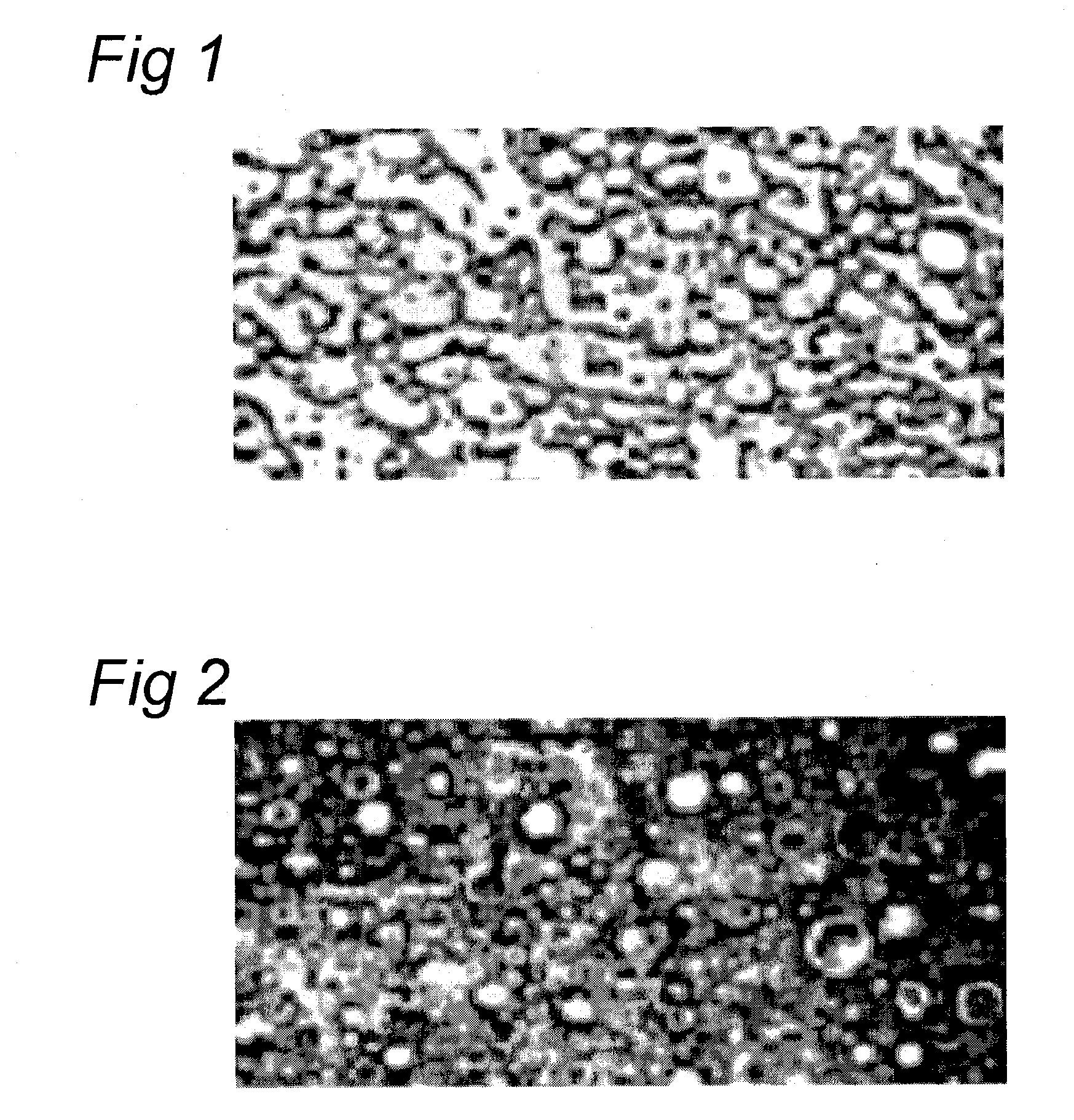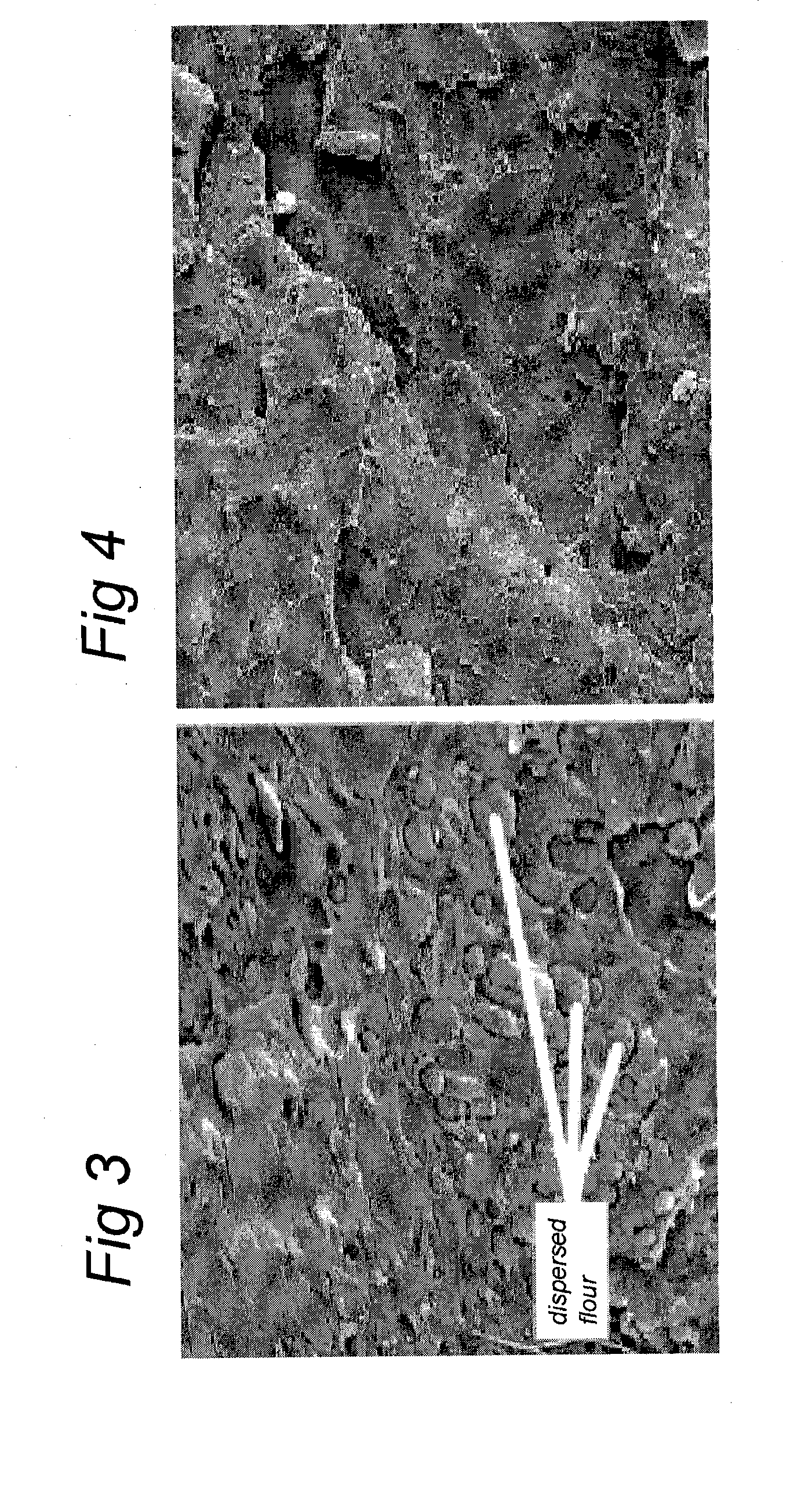Bioplastics
a bioplastic and biodegradable technology, applied in the field of biodegradable materials, can solve the problems of unsatisfactory water sensitivity and save various energy-consuming drying steps, and achieve the effects of improving properties, improving renewability, and reducing or eliminating the disadvantages of the field
- Summary
- Abstract
- Description
- Claims
- Application Information
AI Technical Summary
Benefits of technology
Problems solved by technology
Method used
Image
Examples
example 1
Thermoplastic Base Composition
[0112]A thermoplastic base composition was made with a Weber DS 48 extruder. The following formulation was applied: 12.7 parts LL2504 (polyvinyl alcohol stabilized polymer powder from vinyl acetate and ethylene), 15.2 parts LL2510 (polyvinyl alcohol stabilized polymer powder from vinyl acetate), 49.6 parts FlourPlast (tradename of Meneba), 1.9 parts melt flow accelerators, 7 parts glycerol. The melt temperature was 90-91° C. at 27 rpm. The resulting granulate was injection moulded with an Engel ES 600 / 125 machine (screw 30 cm, at Tmelt=160° C.) in the shape of a tensile bar (ISO 3167 type 527).
[0113]The tensile bars showed the following properties:
E-modulus 1.2 GPa; tensile strength 1.1 MPa; elongation 11%; impact strength 0.9 kJ / m2. The base composition in form of granulates could be easily injection moulded. This was not possible with a composition which differed from the above base composition in that no LL2504 was contained, because the pressure bui...
example 2
Thermoplastic Multi-Component Composition
Multi-Component Composition A):
[0114]The granulate from Example 1 was air dried at 50° C. overnight (remaining water content <0.5% water). Then the granulate was mixed with 30 wt % PLA 2002D (polylactic acid; Ingeo plastic resin type; tradename of Nature Works LCC), based on the total mass of the dried granulate from Example 1, and injection moulded with Engel ES 600 / 125 machine (screw 30 cm, at Tmelt=170° C.) into tensile bars. The mechanical properties of the product A) are shown in Table 1.
Multi-Component Composition B):
[0115]The process for the preparation of the multi-component composition A) was repeated with the difference that the formulation for the preparation of the base composition contained additionally 5 parts water and that the melt temperature was 80-84° C. at 25 rpm. The mechanical properties of the product b) are shown in Table 1.
TABLE 1E-modulusTensile StrengthElongationImpact strengthProduct[GPa][MPa][%][kJ / m2]A2.42.72.51....
PUM
| Property | Measurement | Unit |
|---|---|---|
| temperature | aaaaa | aaaaa |
| temperatures | aaaaa | aaaaa |
| temperatures | aaaaa | aaaaa |
Abstract
Description
Claims
Application Information
 Login to View More
Login to View More - R&D
- Intellectual Property
- Life Sciences
- Materials
- Tech Scout
- Unparalleled Data Quality
- Higher Quality Content
- 60% Fewer Hallucinations
Browse by: Latest US Patents, China's latest patents, Technical Efficacy Thesaurus, Application Domain, Technology Topic, Popular Technical Reports.
© 2025 PatSnap. All rights reserved.Legal|Privacy policy|Modern Slavery Act Transparency Statement|Sitemap|About US| Contact US: help@patsnap.com


